While the hottest topic in maintenance management has now given way to Artificial Intelligence (AI), which I spoke to in one of our last articles… Predictive Maintenance and the use of data analytics in the field continues to gain more momentum in terms of user adoption. Perhaps it is because we are now raising the ceiling again on the next big thing, that the last big thing is getting broader acceptance?
Whatever the phenomenon is behind it, Predictive Maintenance has picked up steam and more companies are now pushing beyond preventative maintenance to the next logical evolution in their practice.
As most reading this article know, Predictive Maintenance (PdM) involves using advanced technologies, such as sensors, Internet of Things (IoT) devices, and machine learning algorithms, to monitor equipment in real-time and predict potential failures before they occur. By analyzing data from equipment sensors, systems can identify patterns and anomalies that indicate impending issues and automatically generate PdM Work Orders, as well as notifications, alerting maintenance teams to the urgency of each incident as it arises.
Like Preventative Maintenance (PM), PdM can reduce downtime by addressing potential failures before they cause significant disruptions. Unlike PM’s predictive maintenance does this in real time based upon indicators coming directly from your equipment, telling you that the optimal time for proactive repairs is now. PdM’s help minimize unnecessary expenses by avoiding the costs incurred when parts are replaced, and spares are consumed prematurely. This extends the lifetime of parts based upon actual wear, not because the calendar or meter said to. There are usually warning signs before a catastrophic failure of a valuable asset occurs. If manual inspections miss these, the result can have devastating financial and safety consequences. There is still a vital place for PM’s of course. Planning downtime for a scheduled PM allows for timing stoppages for when they will have the least disruption and expense.
As technology continues to evolve, and more organizations embrace Industry 4.0 concepts, predictive maintenance remains a hot topic in maintenance management. The ability to harness data and apply advanced analytics to make informed decisions is driving significant improvements in maintenance practices, asset reliability, and overall operational performance. Adding Artificial Intelligence to Predictive Maintenance will provide significant enhancement going forward.
So, what is stopping your organization from taking the next step in your maintenance evolution?
While predictive maintenance offers numerous benefits, there are several things to consider when implementing. Let’s examine these potential obstacles and get them out of your way.
Initial Investment: Implementing predictive maintenance can require upfront investment in sensors, data analytics tools, software integration, and employee training. Smaller or budget-constrained organizations may find it challenging to allocate resources for such a comprehensive system. Azzier CMMS allows for both automated PdM through connected sensors, as well as manual entry of data gathered through inspection.
Data Quality and Accessibility: Predictive maintenance relies on high-quality, real-time data from sensors and equipment. If the data is inaccurate, incomplete, or difficult to access, it can lead to unreliable predictions and limit the effectiveness of the predictive maintenance system. It is therefore essential to partner with experienced vendors to ensure the quality and timeliness of data inputs.
Legacy Equipment: Older machines and equipment may not have built-in sensors or the necessary capabilities to support predictive maintenance. Retrofitting these assets with sensors and IoT devices carries a cost and may be too complicated for internal resources to manage. Selecting an experienced partner will overcome this challenge.
Skills and Knowledge Gap: Implementing predictive maintenance can require skilled data analysts, data scientists, and domain experts who understand both the maintenance and the technical aspects of data analysis. Basic reports and dashboards may be created in house, but more sophisticated metrics and tools may require a higher skill level. Organizations may face challenges in finding and retaining qualified personnel or adequately training current staff. Partnering with a vendor who doesn’t just sell software, but provides extensive consulting expertise will address this.
Change Management: Adopting predictive maintenance often requires changes in maintenance practices and workflows. Resistance to change from maintenance teams and management can hinder successful implementation.
Integration with Existing Systems: Integrating predictive maintenance systems with existing enterprise resource planning (ERP) or computerized maintenance management systems (CMMS) can be complex and time-consuming if you do not have in-house expertise. Look for a partner that can demonstrate their expertise with data integration between CMMS and other corporate software systems.
Complexity of Data Analysis: Analyzing large volumes of data from multiple sources requires sophisticated data analytics tools and algorithms. Organizations may struggle to find or develop the appropriate algorithms to extract actionable insights from the data. Basic reports and dashboards can be achieved with in-house resources. However, more involved analyses will require more skill on your IT bench and a partner than can provide mentorship.
Despite these challenges, the growing awareness of the benefits of predictive maintenance, advancements in technology, and success stories from early adopters are overcoming barriers and driving wider adoption of predictive maintenance across various industries. There is a surge in PdM adoption going on. Will you be part of it?
At Tero Consulting, we find most organizations focus on the basics first – Work Orders and PM’s followed by Inventory and Purchasing. These areas consistently show significant ROI and are the necessary first steps in taking a responsible approach to avoiding unplanned outages and expenses. Next comes Predictive Maintenance. Companies that have a firm control of WO’s, PM’s, INV and PO’s can take their maintenance practice to the next level by implementing PdM.
Contact us if your company is ready to add Predictive to your maintenance practice.
Take Azzier® for a test drive at https://azzier.com
Call 1-866-818-8376 ext. 407 for a personalized consultation of your maintenance needs or email us at sales@tero.ca . With 44 years of maintenance experience, we can help you reduce risk and improve your bottom line.






















































